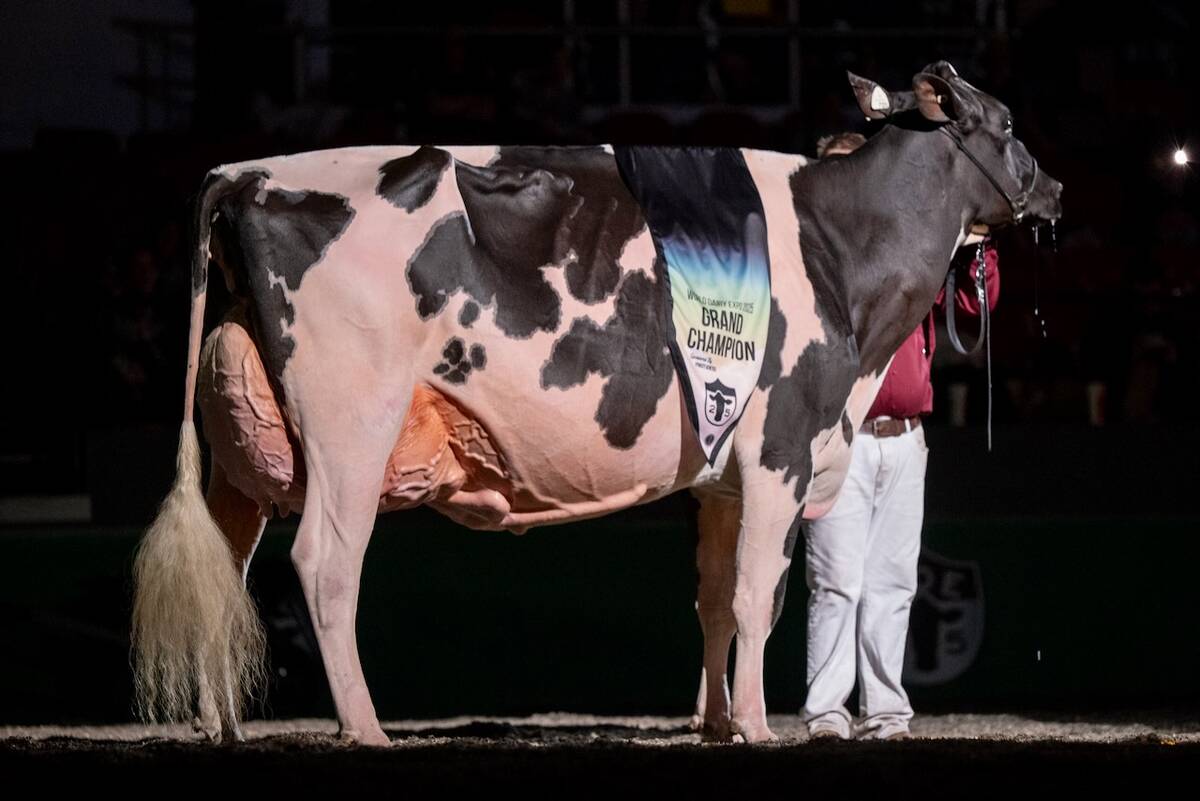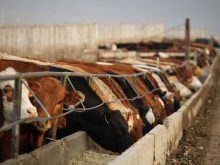LETHBRIDGE – Future world food security may depend on expanded irrigation.
“Irrigation agriculture links water and food,” said Henry Vaux of the University of California at an international water scarcity conference held in Lethbridge July 13-16.
Irrigation is often criticized as a heavy water consumer. It encourages widespread chemical use on crops and has broad impacts on ecosystems, said American researcher Sandra Postel.
However, she and Vaux agreed it is necessary to feed a growing population living in water-deficit areas.
Developing major water projects to support agriculture, hydroelectric power, industrial and municipal supplies came with a cost, said Postel.
Read Also

Canadian-bred cow wins World Dairy Expo Holstein show
A cow bred in Saskatchewan, Lovhill Sidekick Kandy Cane, is the Grand Champion Holstein at the 2025 World Dairy Expo.
“In 1950, there were 5,000 major dams in the world. Today there are 45,000 dams of 15 metres or higher. The result was a changed hydrologic environment as water was shifted into reservoirs. These projects sever a river from its ecosystem leading to a series of unexpected consequences.”
Fish spawning is affected, rivers may fail to deliver nutrients to floodplains, sediments are not carried to deltas, natural water purification is not taking place in wetlands and it is difficult to maintain the saline balance along coastal areas. Fewer dams are likely to be built in the future because taxpayers are less willing to foot the bill.
“It has become clear that it is no longer possible to address water scarcity exclusively or even primarily by continuing to build im-poundment and transport facilities,” Vaux said.
Yet western agriculture supplies significant amounts of the entire continent’s food and fibre needs. Much of the productivity comes from irrigation. On an international scale, countries facing food shortages also face water deficits.
“By importing foodstuffs, you import water,” he said.
North America, South America, western Europe and Australia can grow extra food for export because they have enough water and good growing conditions.
However, parts of Australia and the western United States are having water quality and quantity problems and may be unable to keep up with world demand.
Canada, and especially Alberta, will play a pivotal role in addressing hunger in the next two decades, which makes planning essential, said Vaux. That likely means expansions and efficient use of available water.
In the U.S., 15 percent of the land is irrigated but it accounts for 38 percent of the country’s crops. In Alberta, four percent of the agriculture land base is irrigated but is responsible for 20 percent of the province’s agricultural output.
Sixty-five percent of Canada’s irrigated agriculture is in Alberta, with most of the water drawn from the South Saskatchewan River basin.















